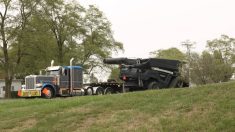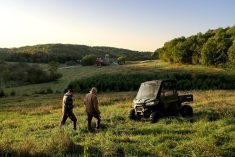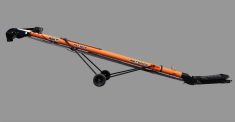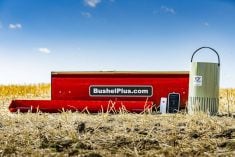Loading grain trucks often involves a little guesswork. Experienced farmers can usually make a pretty good guess when estimating load weights. But even the best occasionally get it wrong, and a guess is never 100 per cent accurate. Putting on the biggest possible load minimizes the number of trips to the terminal, which is important for saving fuel costs and cutting down hauling times. But putting on too much can be a costly error if the Highway Transport Patrol catches you on the road when you’re overweight.
One way to eliminate the guesswork is to weigh the truck before you leave the farmyard or bin site. Saskatoon-based Massload offers a range of platform scales suited for that kind of installation. The company claims their scales will read to within 0.25 per cent accuracy even in temperatures as low as -40 C.
Read Also

Claas brings 1000 Series SP forage harvesters to Canada
In mid-August, Claas unveiled its new line of Jaguar forage harvesters at an event in Visalia, California, deep in the heart of that state’s dairy region.
“The Massload axle pad scale works fine in -30 C outdoor weather and is holding up to a high volume of use,” says Rod Swystun of Blaine Lake, Saskatchewan, who uses one in his farming operation. “Accurately weighing the load on a triple-axle, B-train semi-trailer before it goes to market can prevent an overweight ticket that could pay for the axle pad scale.”
Massload uses a sealed, double-ended, shear-beam load cell with no moving parts. Everything is electronic, which eliminates error caused by mechanical wear and tear. The scales have a low six-inch profile and are available up to 168 inches in length (4.26 metres). That’s big enough to get an accurate weight on a set of tridem axles in one group.
For more information see www.massload.com. †















